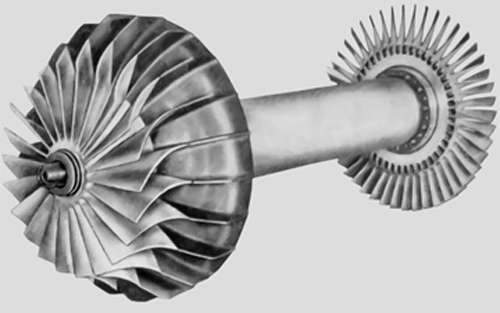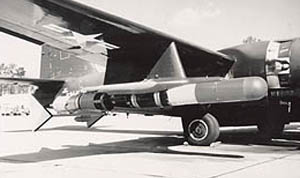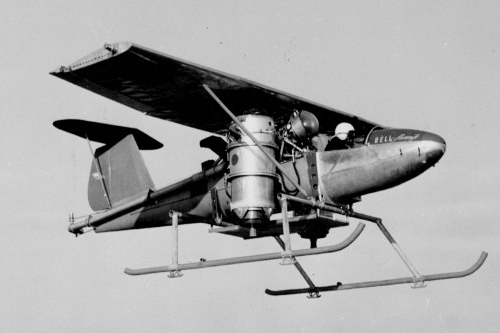

La Fairchild Engine Division démarra son projet d’étude pour un petit réacteur « bon marché » en 1946. Il devait être utilisé par la suite sur les missiles guidés que la compagnie était entrain de développer.
En juin 1947, Fairchlid, s’est vue attribuée par l’US Navy un contrat pour un réacteur de faible puissance, destiné à équipé un missile anti-sous-marin. Ce moteur, désigné J44, a été le premier réacteur américain « consommable », pour lequel une durée de vie d’au plus 10 heures était requise.
Présentation du Fairchild J44
Le compresseur
C’était un compresseur à flux mixte, axiaux et centrifuges et à aubes courbes. Il était construit d’une seule pièce coulée en alliage de magnésium qui ne nécessitait aucun usinage des pales.
Le diffuseur
Similaire au compresseur dans sa conception, la section de diffuseur, avec 3 rangées d’aubes de guidage, était usinée d’une seule pièce.


Combustion chamber
An annular combustion chamber was made from sheet metal and used commercialy available oil burners.
Turbin
The single stage turbine had its blades welded on to a forged steel disc. A simple, stock stainless steel tube, with a welded flange at each end, formed the rotor connecting the turbine to the compressor.
The was a bearing before the compressor and aft of the turbine and a fixed-area exhaust nozzle was used.
In August 1948 the XJ44 made its first run.
The first flight was made in mid 1950 when it powered Fairchild’s Petrel Missile.
As service trial proceeded, so problems with J44 where thrown up, most of them attribuable to over-simplified production. A lot of changes were required, and development of J44 was completed by October 1954 under designation : J44-R-3.
The Improved engine was mounted on a Fairchild C-82 cargo aircraft, then later to each wingtips of the Fairchild C-123B cargo aircraft.
Another use of the J44 was one the experimental Bell model 65 VTOL Aircraft.
The main usage of the J44 was to power the Firebee drone, although, with a specific fuel consumption of 1,55 it could not compete with Continental’s J-69 (Licence version of Turbomeca’s Marbore) and it was taken out of production by 1959.

Application
Le Bell model 65 Air Test Vehicule (ATV) était un projet expérimental d’avion à décollage vertical utilisant deux turboréacteurs à la fois pour le vol vertical et le vol horizontal. Il s’agissait de 2...
Application comme réacteur d’appoint
AVIATION WEEK, February 14, 1953 Additional 2,000 Ib. total thrust provided by small Fairchild J44 turbojets installed on wingtips of Fairchild C-123B give the plane climb rate of 500 fpm. after featherering one prop...
AVIATION WEEK, September 27, 1954 To determine the value of jet assistance in increasing takeoff loads and rate of climb, Fairchild Engine & Airplane Corp.’s Ait- craft Division, Hagerstown, Md., is testing a C-82...
Application sur Missiles et Drones








